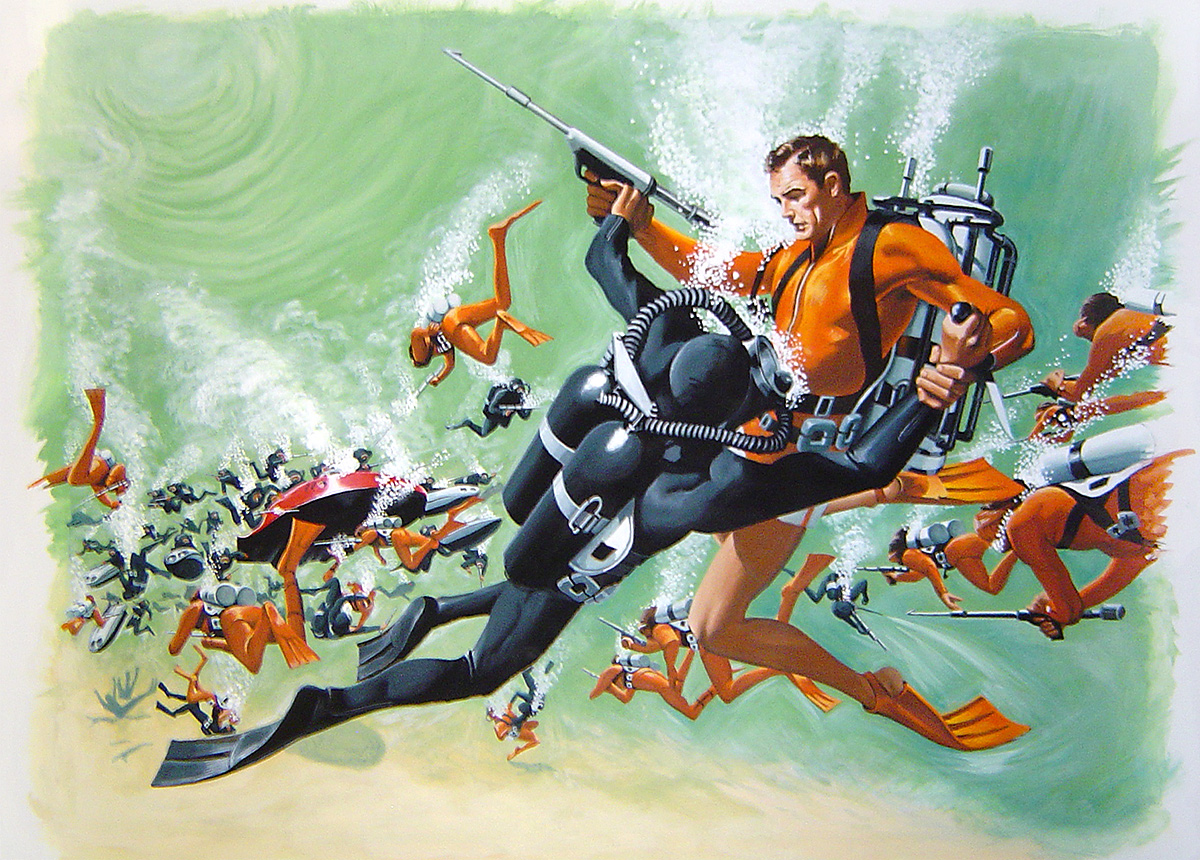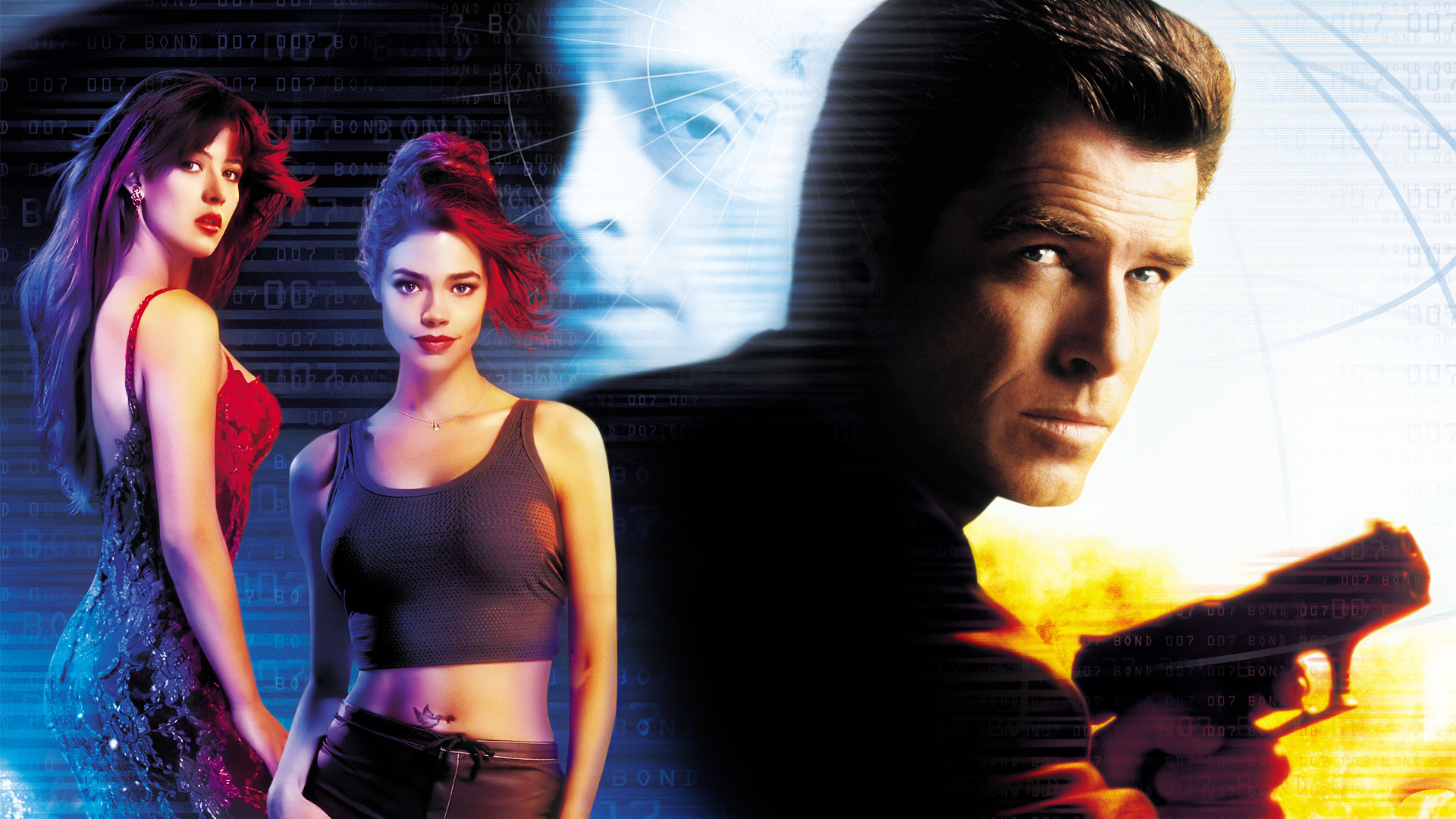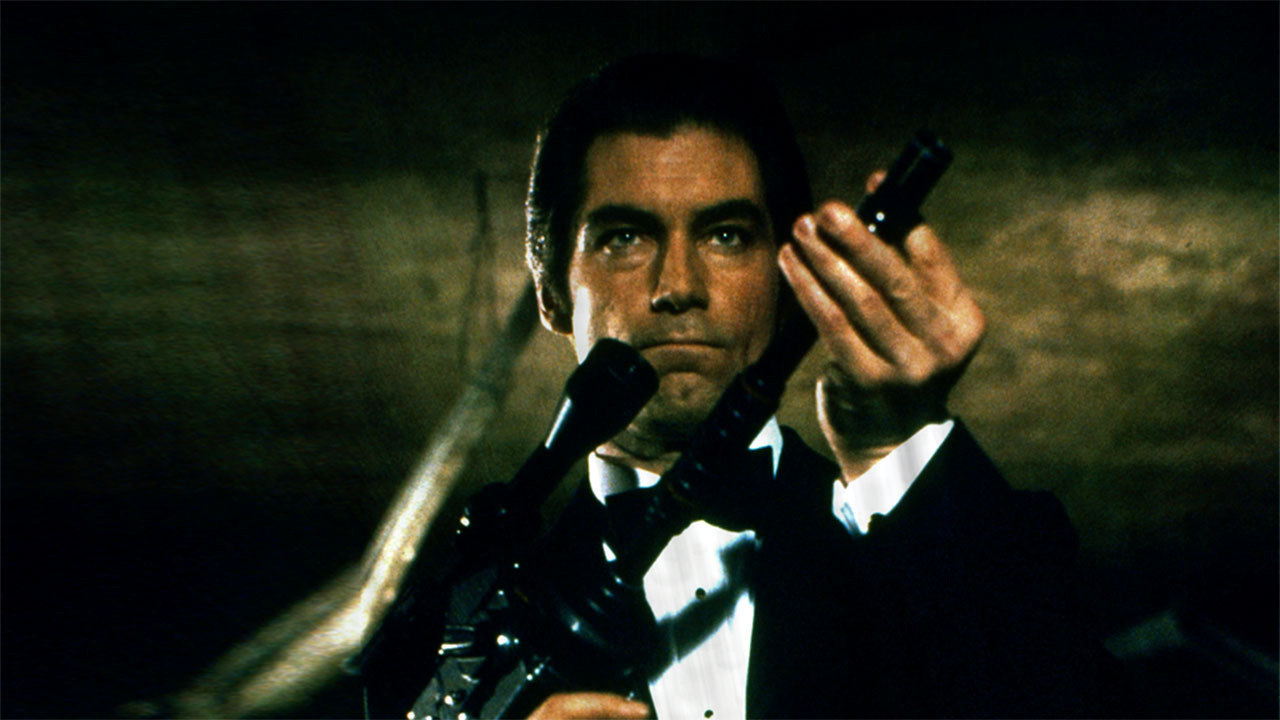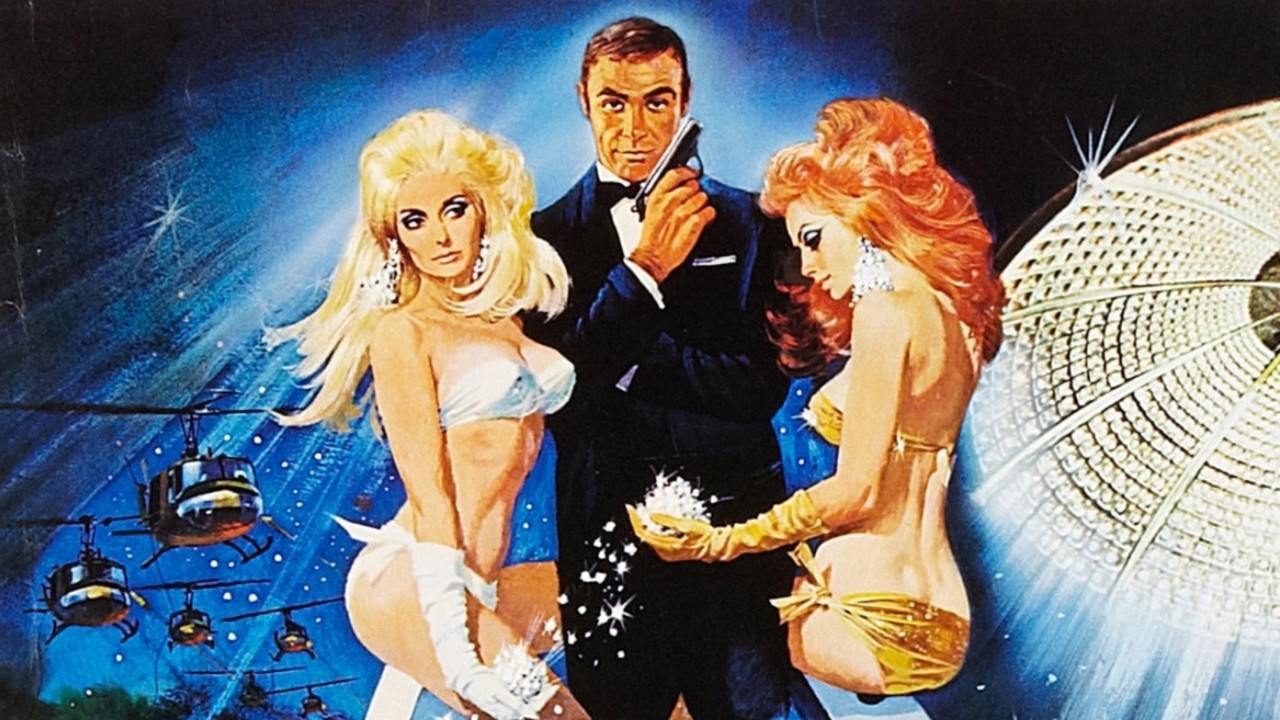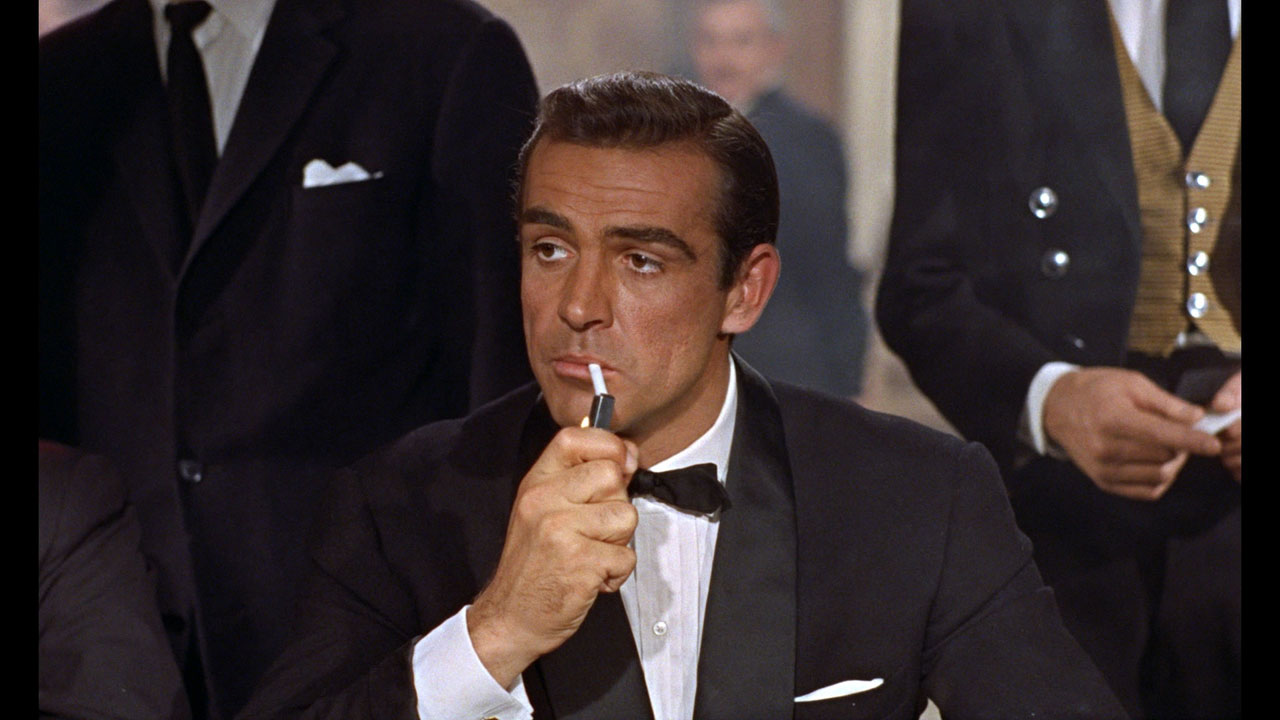Goldfinger (1964, Guy Hamilton):
‘Just a moment, Goldfinger, you’re not through yet.’ Bond glanced up at the girl. She was looking at him strangely. There was misery and fear but also a look of submissiveness, of longing.
‘What’s your name?’
‘Jill Masterson.’
Bond said softly, ‘I’d forgotten. One last thing. I shall be taking a hostage for the ride to New York. Miss Masterson. See that she’s at the train. Oh, and make that compartment a drawing-room. That’s all.’
— Ian Fleming, Goldfinger
Goldfinger marks a point of no return for the James Bond series, and you could identify any number of moments in the film when that point is crossed. The pre-credits scene, wherein Bond electrocutes a man in his bathtub with the kiss-off line, “Shocking…positively shocking.” The sound of those horns belting out wah-wah-wah as Shirley Bassey’s title theme saunters in. That indelible image of a nude Shirley Eaton covered in gold paint, sprawled on the bed. The sight of a steel-brimmed bowler hat flung like a frisbee and decapitating a statue. That Aston Martin DB-5, bristling with gadgets and an ejector seat, revving into action. Arch-villain Goldfinger (Gert Frobe) strapping James Bond (Sean Connery) to a gold table, a laser inching towards our favorite agent’s private parts, and offering the immortal retort to Bond’s defiant “Do you expect me to talk?”: “No, Mr. Bond, I expect you to die!”
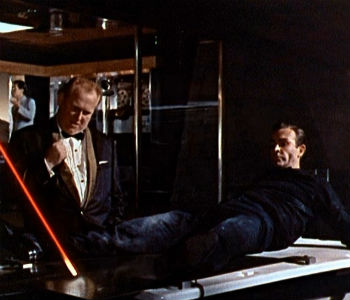 That we can point to so many of these moments, all of them contained in this one movie, is a clear indication that Goldfinger is the quintessential Bond film. From here on in, the Bond series wouldn’t be just another film franchise but a cultural phenomenon, a genre of its own, a game-changer. Where Dr. No (1962) played like a Fu Manchu novel spiced with Mike Hammer, and From Russia with Love (1963) was a John Buchan thriller dolled up with sexual danger, Goldfinger is defiantly its own thing. Slinky and surreal, posh and overblown, slick and witty, it was of its time and above it. Coupled with the explosion of the Beatles that year (perhaps smelling the competition, Bond even throws shade at them: “Drinking a Dom Perignon ’53 above a temperature of 38 degrees Fahrenheit… is almost as bad as listening to the Beatles without earmuffs”), Bond had become the Zeitgeist, and that Zeitgeist was veddy British indeed.
That we can point to so many of these moments, all of them contained in this one movie, is a clear indication that Goldfinger is the quintessential Bond film. From here on in, the Bond series wouldn’t be just another film franchise but a cultural phenomenon, a genre of its own, a game-changer. Where Dr. No (1962) played like a Fu Manchu novel spiced with Mike Hammer, and From Russia with Love (1963) was a John Buchan thriller dolled up with sexual danger, Goldfinger is defiantly its own thing. Slinky and surreal, posh and overblown, slick and witty, it was of its time and above it. Coupled with the explosion of the Beatles that year (perhaps smelling the competition, Bond even throws shade at them: “Drinking a Dom Perignon ’53 above a temperature of 38 degrees Fahrenheit… is almost as bad as listening to the Beatles without earmuffs”), Bond had become the Zeitgeist, and that Zeitgeist was veddy British indeed.
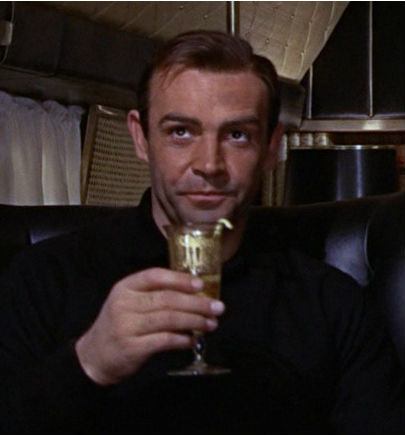 For a film to be classic, and for a genre film series to hit the next level, you have to have an amalgamation of skill, timing and luck, all three of which Goldfinger enjoys. Ian Fleming’s Goldfinger is one of his most absurd tales, and although the key ingredients (the Fort Knox raid, Oddjob and his hat, Pussy Galore) are present, the story bogs down in implausibilities throughout. The challenge for the Bond producers and new director Guy Hamilton was to smooth over the inconsistencies, while maintaining the fun of the central premise. Hamilton brought about a crucial shift in tone: he elevated the self-parody that had always been present in Bond to a high sardonic plane. Bond could still get hurt, he could nearly get split in two with that laser or beheaded with that bowler hat, but he would never lose his cool. It was no longer a question if Bond would survive, but how stylishly he would triumph. Connery, fresh off a starring role in Hitchcock’s Marnie (1964), had progressed enough as an actor to communicate this new-found sense of play (there’s where the timing and luck come in), and his performance in Goldfinger is his most assured work in the entire series. Macho yet detached, scruffy and elegant, with the perfect quip or right hook for any occasion, this is the cinematic Bond character in its purest form.
For a film to be classic, and for a genre film series to hit the next level, you have to have an amalgamation of skill, timing and luck, all three of which Goldfinger enjoys. Ian Fleming’s Goldfinger is one of his most absurd tales, and although the key ingredients (the Fort Knox raid, Oddjob and his hat, Pussy Galore) are present, the story bogs down in implausibilities throughout. The challenge for the Bond producers and new director Guy Hamilton was to smooth over the inconsistencies, while maintaining the fun of the central premise. Hamilton brought about a crucial shift in tone: he elevated the self-parody that had always been present in Bond to a high sardonic plane. Bond could still get hurt, he could nearly get split in two with that laser or beheaded with that bowler hat, but he would never lose his cool. It was no longer a question if Bond would survive, but how stylishly he would triumph. Connery, fresh off a starring role in Hitchcock’s Marnie (1964), had progressed enough as an actor to communicate this new-found sense of play (there’s where the timing and luck come in), and his performance in Goldfinger is his most assured work in the entire series. Macho yet detached, scruffy and elegant, with the perfect quip or right hook for any occasion, this is the cinematic Bond character in its purest form.
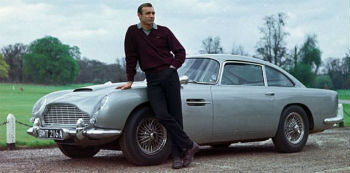 The film built around Connery’s performance reflects this new savoir faire. A speedy Bentley would no longer do; now we had the tricked-out Aston Martin that was every boy (and man’s) ideal Christmas present, provided by the dependably cantankerous Q (as with Connery, Desmond Llewellyn delivers a trend-setting performance in this film — “I never joke about my work, 007”). Exotic locales by themselves would no longer do; we would also get gargantuan villain’s lairs that conjured up memories of German expressionism (all credit to production designer Ken Adam). The central villain would be more than a bad guy; he would be an obsessive megalomaniac whose appetites rivaled Bond’s (Frobe is amusing in the title role, and gets the benefit of some show-stopping lines). The malevolent henchmen were now larger than life, with Harold Sakata’s Oddjob the first and still the best of the near-indestructible strongmen Bond has faced. There would be the opening titles, with cast and crew names projected across the backsides of buxom women, bringing another Bond tradition to full flower. Ominous notes of danger would still percolate in John Barry’s score, but those sassy horns, flirtatious and confident, would share equal billing. The finale wouldn’t be just a mano-a-mano showdown with the main baddie; armies would clash, a clock would tick down to nuclear oblivion, and Bond would be smack in the center of it. When looked at today, Goldfinger might seem fairly subdued, but to audiences at the time, this was the birth of a new kind of cool. Its impact would be felt everywhere, from fashion to merchandising to pop art to other films. It was all very big, but with a velvet touch — we’re meant to savor the gaudiness on display, and take as much pleasure in it as Bond does, like appreciating a finely shaken martini.
The film built around Connery’s performance reflects this new savoir faire. A speedy Bentley would no longer do; now we had the tricked-out Aston Martin that was every boy (and man’s) ideal Christmas present, provided by the dependably cantankerous Q (as with Connery, Desmond Llewellyn delivers a trend-setting performance in this film — “I never joke about my work, 007”). Exotic locales by themselves would no longer do; we would also get gargantuan villain’s lairs that conjured up memories of German expressionism (all credit to production designer Ken Adam). The central villain would be more than a bad guy; he would be an obsessive megalomaniac whose appetites rivaled Bond’s (Frobe is amusing in the title role, and gets the benefit of some show-stopping lines). The malevolent henchmen were now larger than life, with Harold Sakata’s Oddjob the first and still the best of the near-indestructible strongmen Bond has faced. There would be the opening titles, with cast and crew names projected across the backsides of buxom women, bringing another Bond tradition to full flower. Ominous notes of danger would still percolate in John Barry’s score, but those sassy horns, flirtatious and confident, would share equal billing. The finale wouldn’t be just a mano-a-mano showdown with the main baddie; armies would clash, a clock would tick down to nuclear oblivion, and Bond would be smack in the center of it. When looked at today, Goldfinger might seem fairly subdued, but to audiences at the time, this was the birth of a new kind of cool. Its impact would be felt everywhere, from fashion to merchandising to pop art to other films. It was all very big, but with a velvet touch — we’re meant to savor the gaudiness on display, and take as much pleasure in it as Bond does, like appreciating a finely shaken martini.
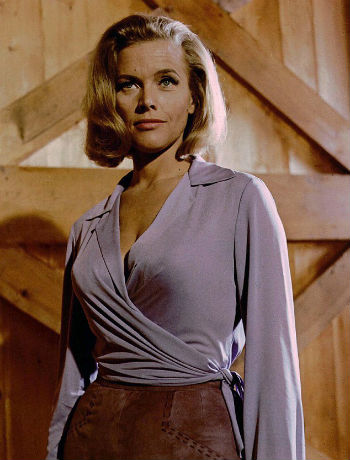 Like every good sophisticate, Hamilton recognized that the only way the whole ridiculous shebang would work was to make it look effortless. The film unfolds at a relaxed, almost jaunty pace, where a not-so-friendly golf game between Bond and Goldfinger is allowed to breathe just as much as the chaotic finale inside Fort Knox. Throughout, we’re reminded that the British Empire reigns ascendant. Bond may be Goldfinger’s prisoner for nearly half the movie, but he’s a damn fine-looking prisoner in his three-piece suit, and the only man we can count on to prevent the collapse of Western society. Meanwhile, his clueless American counterpart Felix Leiter (Cec Linder) is reduced to camping out at KFC when he’s not following false leads, and the American gangsters hired by Goldfinger are all clownish patsies who are easily disposed of. In this new era of swinging cinema, Brit poise and urbanity counts.
Like every good sophisticate, Hamilton recognized that the only way the whole ridiculous shebang would work was to make it look effortless. The film unfolds at a relaxed, almost jaunty pace, where a not-so-friendly golf game between Bond and Goldfinger is allowed to breathe just as much as the chaotic finale inside Fort Knox. Throughout, we’re reminded that the British Empire reigns ascendant. Bond may be Goldfinger’s prisoner for nearly half the movie, but he’s a damn fine-looking prisoner in his three-piece suit, and the only man we can count on to prevent the collapse of Western society. Meanwhile, his clueless American counterpart Felix Leiter (Cec Linder) is reduced to camping out at KFC when he’s not following false leads, and the American gangsters hired by Goldfinger are all clownish patsies who are easily disposed of. In this new era of swinging cinema, Brit poise and urbanity counts.
Unusually, the Bond girls this time out all hail from the UK. Shirley Eaton makes an impression even before she’s painted to death, all wide eyes, long legs, and a come-hither smile that suggests she enjoys bagging guys as much as Bond enjoys chasing the ladies. And of course there’s Honor Blackman’s Pussy Galore, a character that could only make sense in the permissive, anything-goes ’60s. (Until the last moment, the producers didn’t know if the character’s name would fly with the censors; as a test they arranged for a tabloid shoot with Blackman and Prince Phillipe, with the title “Pussy and the Prince,” and the positive response ensured that history of a sort would be made.) A tough-nails pilot who knows her judo and happens to have a bevy of female aviators at her disposal, Pussy was as (vaguely) lesbian as you could get in mainstream cinema at the time. Blackman was older than the film’s leading man (a rarity in Bond movies), and is one of the few Bond women to match 007’s self-assurance, which makes it all the more jarring when Bond takes Pussy by force and vanquishes her with his charms. To be fair, though, the Pussy of the book, who is more defiantly lesbian, succumbs to Bond with even less rhyme or reason.
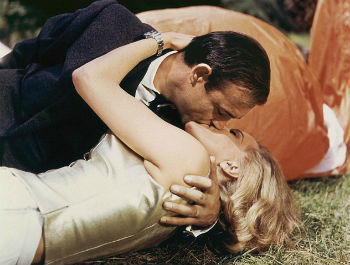 Goldfinger peaks with that climax in Fort Knox and that now-familiar denouement in which Bond and his gal of choice bed down together away from prying eyes, the world saved and the audience satiated. The template had been set, and the only challenge that remained for all future Bond entries was how to top what had been done, or subtly subvert it. Likewise, the rules of the game for the spy genre had been changed; ostensibly down-to-earth projects like Patrick McGoohan’s “Secret Agent” TV series couldn’t avoid the luxe trappings that had come to characterize the Bond universe, and even serious fare like Michael Caine’s The Ipcress File (1965) (produced by Bond co-producer Harry Saltzman) would copy the idea of a hero with a blithe contempt for authority as well as an eye for the ladies. Bond was no longer just a character but also a brand. He had become the hunted, with copycats angling to steal a piece of his pie. In later years formula would harden into routine, and creativity would be more difficult to come by, but regardless of what you think of the merits of Goldfinger and the trends it set, it’s difficult to deny that for the last 50 years, Bond has been trying to catch up with it. That’s the beauty and curse of the Zeitgeist.
Goldfinger peaks with that climax in Fort Knox and that now-familiar denouement in which Bond and his gal of choice bed down together away from prying eyes, the world saved and the audience satiated. The template had been set, and the only challenge that remained for all future Bond entries was how to top what had been done, or subtly subvert it. Likewise, the rules of the game for the spy genre had been changed; ostensibly down-to-earth projects like Patrick McGoohan’s “Secret Agent” TV series couldn’t avoid the luxe trappings that had come to characterize the Bond universe, and even serious fare like Michael Caine’s The Ipcress File (1965) (produced by Bond co-producer Harry Saltzman) would copy the idea of a hero with a blithe contempt for authority as well as an eye for the ladies. Bond was no longer just a character but also a brand. He had become the hunted, with copycats angling to steal a piece of his pie. In later years formula would harden into routine, and creativity would be more difficult to come by, but regardless of what you think of the merits of Goldfinger and the trends it set, it’s difficult to deny that for the last 50 years, Bond has been trying to catch up with it. That’s the beauty and curse of the Zeitgeist.

